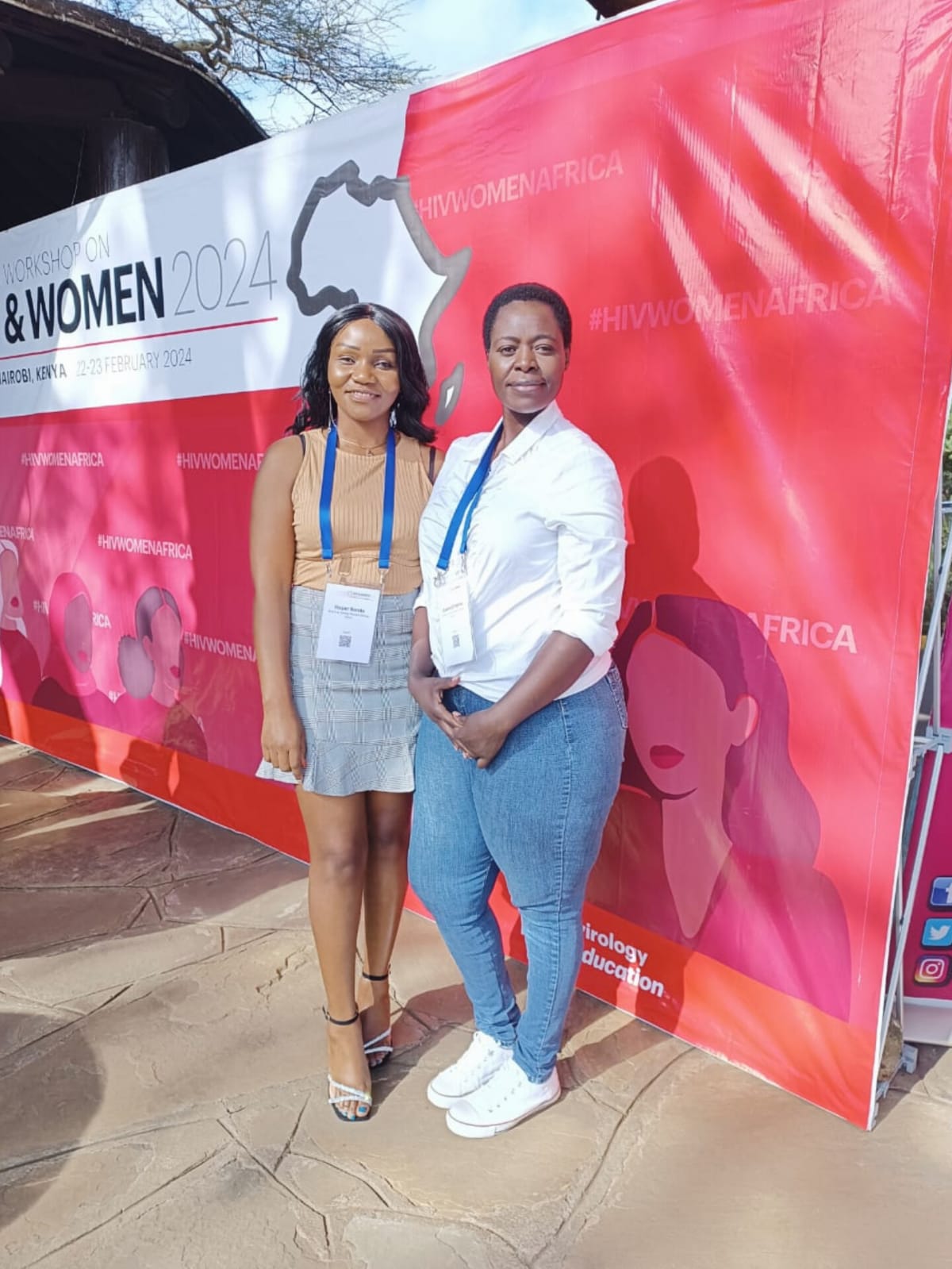




Gratitude
Attending the African Hybrid Workshop on HIV and Women 2024 was my first ever experience in a Workshop at a Global level, and I cannot help but express immense pleasure to have been a part of this mega event. This year’s workshop was held in Nairobi, Kenya, and We, as Positive Young Women Voices (PYWV), were fortunate enough to be a part of this amazing 2 days in a journey towards ending the HIV epidemic.
Where do we stand
The opening remarks, "Are we making progress or is the job done?" set the pace for what many of us anticipated for Answers. Despite tremendous advances in HIV research in the previous years, women and particularly key populations remain disproportionately affected by the HIV epidemic worldwide. It is 2024, and Women and girls in all diversities still account for high numbers of new HIV infections globally.
Globally, 46% of all new HIV infections were among women and girls in 2022. In sub-Saharan Africa, adolescent girls and young women (AGYW) accounted for more than 77% of new infections among young people aged 15-24 years in 2022 (UNAID Global AIDS update 2022). AGYW need special focus as they remain vulnerable. This is attributed to missed opportunities and services, particularly SRHR, Socioeconomic status, HIV and Sexual exposure. What’s surprising is the fact that HIV is still equated to sex work. The big question is, is HIV a political discussion? and are we Politicizing Adolescent Sexuality as in the case of Comprehensive Sexuality Education?
Update on HIV Pre-Exposure Prophylaxis
TDF/FTC was the first approved oral PrEP in 2012. 8 countries in Sub-Saharan Africa (SSA) have surpassed 100,000 PrEP initiation, accounting for 91% of initiation in the region. Kenya and South Africa were 2 of the earliest adopters, scaling up over time. However, PrEP continuation rates tend to decline 3 months after initiation. This brings us to the question of choice, and yes, choice matters because, similar to contraceptives, different people have different HIV prevention needs at different times, as presented by Dr Nyaradzo Mavis Mgodi from Zimbabwe.
This greatly highlights the need to keep pushing for Dapivirine, a monthly Vaginal Ring that's self-inserted and was approved by European Medicine Agency in 2020 and several SSA countries, alongside long-acting injectable PrEP(cabotegravir, CAB-LA). This will essentially be a risk reduction tool for women unable or unwilling to take the oral prep.
DPP, a Dual Prevention Pill, is currently being developed by private initiates for daily use to prevent HIV and Pregnancy.
Highlights
The major thing that stood out throughout is the oneness of all stakeholders in a commitment to addressing the unique challenges faced by women of all ages and all diversities living with HIV across Africa.
"We hear the thunder, but we see no rain," an oral abstract presentation by Lucy Wanjiku, Kenya, highlighted the lessons learned in an effort to promote community-led, evidence-based initiatives to advance our SRHR. Women's empowerment and championing gender equality will greatly bridge the gap in power dynamics. Ending SGBV will lead to a reduction in teen pregnancy and, in turn, new HIV infections among AGYW.
Uptake on other Sexually Transmitted Infections should be integrated into HIV Programming. There are more than 30 other STIs, and multiple infections are possible. This has a direct impact on Sexual Health, increasing the rates of HIV, exposure to cancers, pregnancy complications and cases of infertility. The global burden on STIs is increasing as the majority are asymptomatic, and the point of care for most STIs is still in the pipeline.
U=U for zero HIV transmissions is a life-changing initiative. There is evidence that persons living with HIV (PLWHIV) with undetectable viral load have zero risk of transmitting HIV to their sexual partners. With this, we will achieve optimal overall health, mental health, physical health, sexual health, ART Adherence, Viral suppression, and reduce Stigma. This is possible through inclusivity (including the newly diagnosed)~Doreen Moracha, Kenya.
“Adolescents are struggling with Adherence, so we ought to give adolescents a blanket of care as we create a transition plan for Adult clinics,” Doreen added. “We could have age-related clinics like Youth Day and develop retention strategies for adolescent girls' health programs.”
Calls to Action
Get all women on treatment.
Leave no woman behind on the road to DTG.
Quick and easy access to screening and management of comorbidities.
Full political commitment to supporting and funding HIV programming and women's rights organizations.
Funding of Research Programs.
100% community involvement with strategies that work for the community.
Amplify women's voices and stories.
Integration of other STIs in HIV programming.
Comprehensive screening in pregnant and breastfeeding mothers.
Collective effort in ending SGBV.
“We are on the right track on HIV interventions. However, no one shoe size fits all. There is no face to what HIV looks like,” Nozibele Qamngana, South Africa, “ therefore we need to put strategies that align with our needs and those of our communities.”
Women, youth and key population-led organizations all speak the same language. Let communities lead for a world in which all women, girls, and gender-diverse people receive evidence-based care, prevention, and treatment tailored to their unique needs, circumstances, and goals.